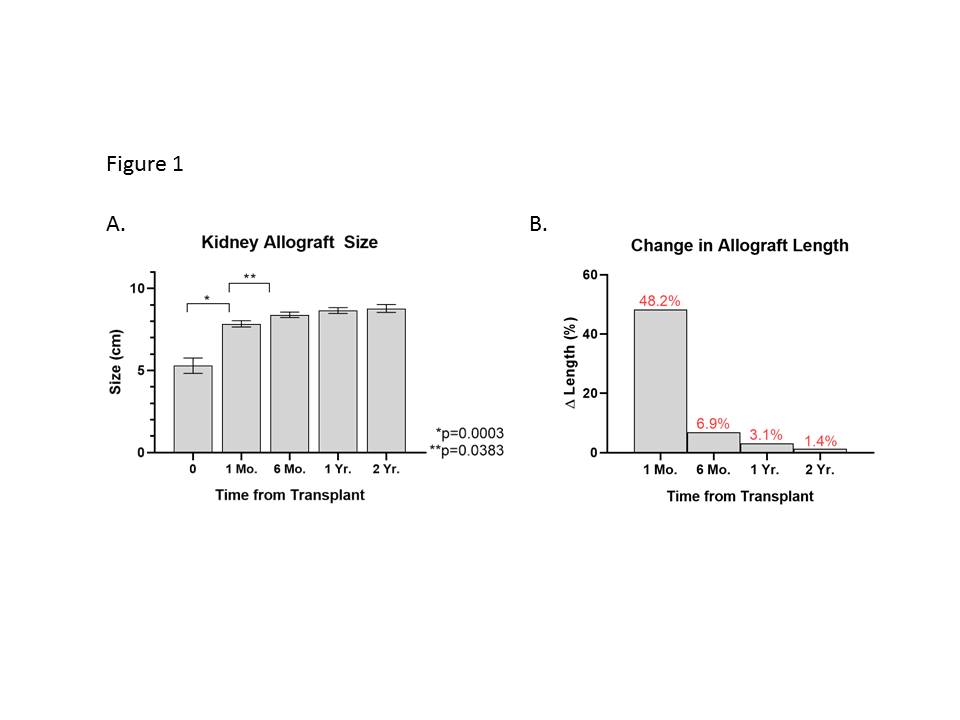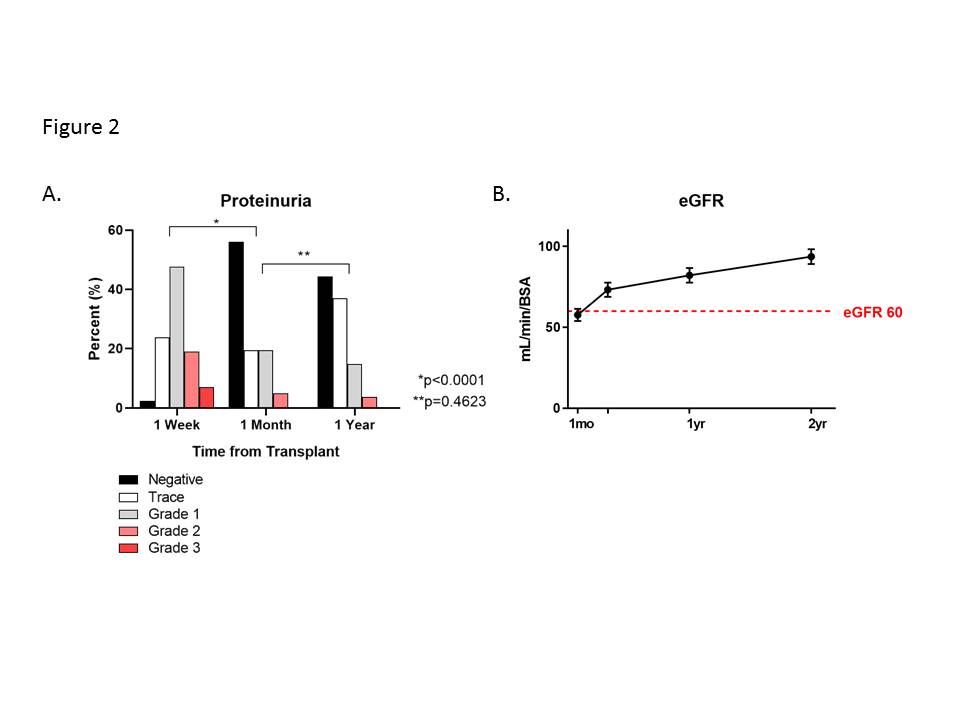Early Compensatory Hypertrophy Circumvents Hyperfiltration Injury in Adult Recipients of Small Pediatric Deceased Donor Kidneys
1Mayo Clinic Alix School of Medicine, Phoenix, AZ, 2Mayo Clinic, Phoenix, AZ
Meeting: 2020 American Transplant Congress
Abstract number: C-023
Keywords: Kidney transplantation, Nephron mass, Proteinuria
Session Information
Session Name: Poster Session C: Kidney Deceased Donor Selection
Session Type: Poster Session
Date: Saturday, May 30, 2020
Session Time: 3:15pm-4:00pm
 Presentation Time: 3:30pm-4:00pm
Presentation Time: 3:30pm-4:00pm
Location: Virtual
*Purpose: Donor-to-recipient body weight ratios have been shown to influence kidney transplant (KT) outcomes. For small pediatric donors, this mismatch is far more pronounced and post-KT estimated glomerular filtration rate (eGFR) remains challenging to predict. To investigate this in more detail, we examined early and late post-transplant patterns specific to kidney allograft size, proteinuria and eGFR.
*Methods: Between 2007 and 2019, 45 adult recipients at Mayo Clinic Arizona were identified as receiving pediatric en bloc kidneys from donors weighing <20 kg. Results were analyzed using chi-square analysis and unequal variance t-tests. Results are shown as mean ± standard deviation.
*Results: The observed donor-to-recipient weight ratio was 0.19±0.06 (Donor weight: 12.3±3.3 kg; Recipient weight: 68.0±13.1 kg). Kidney growth was most pronounced in the first 6 months post-KT with the majority of growth occurring in the first month (p=0.0003, 48.2%) (Figure 1A-B). Relative stabilization of allograft size was noted by 1 year (Figure 1A-B). Mild proteinuria was observed in the first week post-KT (p<0.001) with the majority of patients showing resolution by 1 month post-KT (Figure 2A). Despite relative stabilization of allograft size by one year, eGFR continued to improve beyond 1 year (Figure 2B). Early (<6 months post-KT) rejection (n=4, 8.9%), cytomegalovirus (n=2, 4.4%) and BK viral (n=2, 4.4%) infections were uncommon and did not appear to impact allograft growth (p=0.9311) or eGFR (p=0.8450).
*Conclusions: Low donor-to-recipient weight ratios are observed when utilizing small (<20 kg) pediatric donors. In our cohort, significant allograft growth occurred in the first 6 months. Proteinuria was noted to resolve early and stabilize while eGFR continued to increase beyond the first post-transplant year. Robust early kidney allograft hypertrophy, specific to pediatric donors, appears to be protective against hyperfiltration injury. With mindful donor-recipient pairing, good renal function can be achieved using kidneys from smaller pediatric donors.
To cite this abstract in AMA style:
Das D, Nateras RNunez, Smith M, Mour G, Singer A, Reddy K, Heilman R, Moss A, Khamash H, Jadlowiec C. Early Compensatory Hypertrophy Circumvents Hyperfiltration Injury in Adult Recipients of Small Pediatric Deceased Donor Kidneys [abstract]. Am J Transplant. 2020; 20 (suppl 3). https://atcmeetingabstracts.com/abstract/early-compensatory-hypertrophy-circumvents-hyperfiltration-injury-in-adult-recipients-of-small-pediatric-deceased-donor-kidneys/. Accessed December 14, 2025.« Back to 2020 American Transplant Congress


